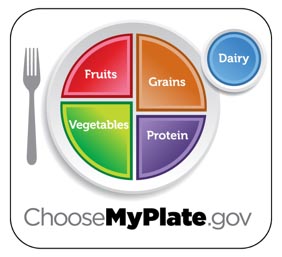It’s hard to find a simply delicious, naturally nutritious food that provides more benefits than beans. We’re talking about dry edible beans like pinto beans, black beans, kidney beans, and many other types that are harvested when the beans are dry in the seed pod.
From protein and fiber to cost-savings and convenience, dry beans are a simply delicious, naturally nutritious food that’s a great choice for any meal.
Need more convincing? Here are five great reasons to love beans.
1. Beans Are Naturally Nutritious
- All beans are good sources of protein, excellent sources of fiber, and naturally fat-, sodium-, and cholesterol-free.
- A ½ cup serving of cooked beans contains, on average, 115 calories, 8 grams of protein, less than half a gram of fat, 21 grams of carbohydrate, and 7 grams of fiber.
- Canned beans contain added sodium but draining and rinsing removes up to 40% of the added sodium.
- According to the U.S. Dietary Guidelines for Americans, beans are a “unique food.” Because of their unique combination of nutrients, beans may be considered both a vegetable and protein food when building a healthy plate.
2. Beans Provide Multiple Health Benefits
There’s abundant research showing regular bean consumption provides a variety of health benefits.
- Eating beans may reduce your risk of heart disease, diabetes, and certain types of cancer. Several studies demonstrate that regular consumption of beans—eating about ½ cup of beans most days of the week—may reduce the risk of many diseases including heart disease, diabetes, and cancer.
- Eating beans may help you maintain a healthy weight. People who consume beans frequently have been shown to have a lower body weight.
- Eating beans may support a healthy gut. There is increasing research and attention about the health of the gut or gastrointestinal (GI) tract, how it contributes to overall physical and mental health, and how certain foods benefit or harm the gut. Beans contain a type of fiber called oligosaccharides (all-uh-go-SACK-are-rides), which are non-digestible, fermentable fibers. These fibers make their way intact to the colon where they feed the good, beneficial bacteria.
What does “regular bean consumption” mean? The U.S. Dietary Guidelines recommends eating about 3 cups of legumes, like pinto, kidney, or black beans per weeks. If you eat about ½ cup of beans every day, you’ll meet the weekly Dietary Guidelines for beans.
3. Beans Provide Endless Culinary Options
- Beans’ satisfying texture and mellow flavor make them the perfect blank canvas as a starting point for any meal.
- Beans can be served with breakfast, lunch, dinner, or as a snack. Pinto Bean Hummus, anyone?
- Beans can be added to so many foods to add flavor and nutrition. For example, you can add beans to smoothies, soups, and salads for a boost of plant-based protein and fiber.
- Beans are considered a staple ingredient in many traditional dietary patterns because they are eaten so frequently. In Mexican home kitchens, beans may be served three times a day! Looking to world cuisines and cultures is a great way to find inspiration for cooking with beans.
4. Beans Are Budget Friendly!
- Beans are one of the lowest-cost per serving protein foods. Based on the data below, if a family of four substitutes dry pinto beans for lean ground beef two days a week for a year, they could save nearly $450!
| Food |
Serving Size |
Cost per Serving |
| Pinto Beans (cooked from the dry form) |
½ cup |
$0.07 |
| Lentils (cooked from the dry form) |
½ cup |
$0.08 |
| Red Kidney Beans (cooked from the dry form) |
½ cup |
$0.10 |
| Eggs, grade A, large |
1 large |
$0.18 |
| Pinto Beans (canned, drained) |
½ cup |
$0.19 |
| Red Kidney Beans (canned, drained) |
½ cup |
$0.19 |
| Chicken breast, boneless, skinless |
3 oz. |
$0.65 |
| Pork chop, boneless |
3 oz. |
$0.85 |
| Beef, round roast, USDA choice, boneless |
3 oz. |
$1.06 |
| Ground beef, 90% lean |
3 oz. |
$1.14 |
- Beans are also one of the most nutrient-rich lowest cost foods. A recent vegetable cost analysis found that beans and potatoes are the most nutritious vegetables per penny. The study examined 98 vegetables—fresh, frozen and canned—and calculated the cost per 100 grams, per 100 calories, and per edible cup. A nutrient density score was based on six nutrients: dietary fiber, potassium, magnesium; and vitamins A, C & K.
5. Beans Are A Sustainable Food Choice
- The 2015 Dietary Guidelines for Americans Scientific Report concludes that a diet higher in plant-based foods and lower in animal-based foods is both healthier and more sustainable.
- What is a sustainable diet? The 2015 Dietary Guidelines for Americans Scientific Report recommends eating more vegetables, fruits, whole grains, low- or non-fat dairy, seafood, legumes (including beans), and nuts; and eating less red and processed meats, sugar-sweetened foods and drinks, and refined grains.
- Move beans to the center of your plate! There is an increasing movement to rethink the main foods on the plate. This means featuring beans and other legumes, whole grains, and produce as the star of the plate, and using meat in smaller amounts.
